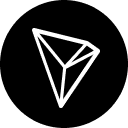What is a Crypto Liquidity Provider?
A crypto liquidity provider is a financial service that supplies cryptocurrency exchanges, brokers, and trading platforms with access to deep order books and competitive pricing. These providers aggregate liquidity from multiple sources including exchanges, market makers, OTC desks, and institutional traders, ensuring platforms can execute trades efficiently regardless of size. Liquidity providers enable smaller exchanges to offer competitive trading conditions without building their own extensive user base.
How Crypto Liquidity Provision Works
Liquidity providers operate by connecting to multiple liquidity sources and aggregating their order books into a single, deep pool. They use sophisticated algorithms to route orders to the best available prices, manage risk, and maintain market neutrality. Through APIs and technology bridges, they deliver this aggregated liquidity to client platforms, enabling instant order execution and tight bid-ask spreads across hundreds of trading pairs.
Types of Liquidity Solutions
Understanding different liquidity models helps you choose the right solution:
Prime of Prime (PoP) Liquidity
Institutional-grade liquidity access:
- Direct connections to tier-1 venues
- Professional trading conditions
- Lower spreads and commissions
- High-volume capacity
- Credit intermediation
- Regulatory compliance
- 24/7 support
Aggregated Liquidity Pools
Combined liquidity from multiple sources:
- Exchange aggregation
- OTC desk integration
- Market maker liquidity
- Institutional flow
- Smart order routing
- Best execution algorithms
- Unified API access
Market Making Services
Dedicated liquidity provision:
- Continuous bid/ask quotes
- Tight spread maintenance
- Volume commitments
- Custom market making
- New token support
- Incentive programs
- Performance guarantees
White Label Liquidity
Turnkey liquidity solutions:
- Ready-to-use integration
- Branded solutions
- Complete infrastructure
- Risk management included
- Technical support
- Compliance tools
- Scalable architecture
Hybrid Liquidity Models
Combining multiple approaches:
- Internal and external liquidity
- Peer-to-peer matching
- Smart liquidity routing
- Dynamic source selection
- Cost optimization
- Risk distribution
- Maximum depth
Key Features of Liquidity Providers
Evaluate providers based on these essential features:
Market Coverage
Comprehensive asset and market access:
- Number of supported cryptocurrencies
- Fiat currency pairs
- Exotic and emerging tokens
- Derivatives and futures
- Stablecoin liquidity
- Cross-chain assets
- Regional market access
Technology Infrastructure
Robust technical capabilities:
- API latency and performance
- FIX protocol support
- WebSocket connections
- Failover systems
- Load balancing
- Co-location options
- Uptime guarantees
Pricing and Spreads
Competitive pricing structures:
- Tight bid-ask spreads
- Transparent fee models
- Volume-based discounts
- No hidden charges
- Competitive commission rates
- Rebate programs
- Flexible terms
Risk Management
Professional risk controls:
- Real-time monitoring
- Exposure limits
- Automated hedging
- Credit facilities
- Margin requirements
- Settlement procedures
- Compliance tools
Benefits of Using Liquidity Providers
Leverage professional liquidity services for multiple advantages:
Instant Market Depth
- Immediate access to deep order books
- No need to build user base
- Professional trading conditions
- Reduced time to market
- Competitive from day one
- Global market access
- 24/7 availability
Reduced Operational Costs
- No market making expenses
- Eliminated counterparty risk
- Reduced technology costs
- Simplified operations
- Lower compliance burden
- Predictable pricing
- Scalable solutions
Enhanced User Experience
- Minimal slippage
- Fast order execution
- Competitive spreads
- High fill rates
- Stable markets
- More trading pairs
- Professional features
Risk Mitigation
- Distributed counterparty risk
- Professional risk management
- Regulatory compliance
- Market manipulation protection
- Balanced order books
- Stable pricing
- Insurance options
Integration Process
Implementing liquidity solutions efficiently:
Technical Integration
-
API Setup
- Obtain API credentials
- Review documentation
- Set up test environment
- Configure endpoints
- Implement authentication
- Test connectivity
-
Order Routing
- Map trading pairs
- Configure routing rules
- Set up failover logic
- Implement monitoring
- Test execution flow
- Optimize performance
-
Risk Configuration
- Set exposure limits
- Configure margins
- Implement controls
- Set up alerts
- Test scenarios
- Document procedures
Business Integration
-
Commercial Setup
- Negotiate terms
- Sign agreements
- Set up accounts
- Configure billing
- Establish credit
- Review SLAs
-
Operational Readiness
- Train staff
- Document processes
- Set up monitoring
- Establish support channels
- Create escalation procedures
- Plan launch
Go-Live Process
- Launch Preparation
- Final testing
- Performance validation
- Risk assessment
- Communication plan
- Rollback procedures
- Success metrics
Liquidity Provider Selection Criteria
Choose providers based on comprehensive evaluation:
Technical Capabilities
- API performance and reliability
- Integration complexity
- Documentation quality
- Support responsiveness
- Technology stack
- Innovation roadmap
- Scalability options
Market Quality
- Spread competitiveness
- Market depth
- Fill rates
- Slippage statistics
- Uptime history
- Geographic coverage
- Asset variety
Commercial Terms
- Pricing transparency
- Fee structure
- Minimum commitments
- Contract flexibility
- Payment terms
- Service levels
- Growth incentives
Reputation and Stability
- Track record
- Client references
- Financial stability
- Regulatory status
- Industry partnerships
- Market position
- Growth trajectory
Pricing Models
Understanding liquidity provider pricing:
Commission-Based Pricing
- Per-trade commissions
- Maker-taker models
- Volume tiers
- Currency-specific rates
- Minimum fees
- Maximum caps
- Rebate structures
Spread-Based Models
- Markup on spreads
- Fixed spread additions
- Dynamic pricing
- Time-based variations
- Volume considerations
- Market conditions
- Transparency levels
Subscription Models
- Monthly access fees
- Tiered service levels
- Unlimited usage options
- Feature-based pricing
- Support inclusions
- SLA guarantees
- Enterprise packages
Hybrid Pricing
- Base fee plus commission
- Spread and volume combination
- Performance incentives
- Revenue sharing
- Custom arrangements
- Flexible structures
- Growth-aligned pricing
Market Making vs. Liquidity Aggregation
Understanding the differences:
Market Making
Professional quote provision:
- Continuous two-way quotes
- Obligation to provide liquidity
- Spread capture strategies
- Inventory management
- Risk assumption
- Performance metrics
- Dedicated support
Liquidity Aggregation
Combined liquidity sourcing:
- Multiple venue access
- Best price selection
- No market risk
- Pure intermediation
- Technology focus
- Routing optimization
- Execution quality
Choosing the Right Model
Consider your needs:
- Market Making: For new assets, guaranteed liquidity
- Aggregation: For established markets, best pricing
- Hybrid: For comprehensive coverage
- Custom: For specific requirements
Regulatory Considerations
Navigate compliance requirements:
Licensing Requirements
- Money services licenses
- Securities regulations
- Derivatives authority
- Cross-border compliance
- Local registrations
- Partner credentials
- Ongoing obligations
AML/KYC Compliance
- Customer verification
- Transaction monitoring
- Suspicious activity reporting
- Record keeping
- Compliance programs
- Training requirements
- Audit trails
Market Conduct
- Fair trading practices
- Market manipulation prevention
- Best execution duties
- Conflict management
- Transparency requirements
- Client protection
- Ethical standards
Reporting Obligations
- Regulatory reporting
- Transaction reporting
- Large trader reports
- Tax compliance
- Cross-border declarations
- Audit requirements
- Data retention
Technology and Infrastructure
Critical technical considerations:
Connectivity Options
- REST APIs
- FIX protocol
- WebSocket feeds
- Binary protocols
- Custom bridges
- SDK availability
- Integration tools
Performance Metrics
- Latency benchmarks
- Throughput capacity
- Order acceptance rates
- Fill ratios
- Uptime statistics
- Recovery times
- Scalability limits
Security Features
- Encryption standards
- Authentication methods
- DDoS protection
- Penetration testing
- Incident response
- Access controls
- Audit capabilities
Monitoring and Support
- Real-time dashboards
- Alert systems
- Performance analytics
- Issue tracking
- 24/7 support
- Dedicated teams
- Escalation procedures
Common Challenges and Solutions
Address typical liquidity challenges:
Latency Issues
Challenge: High latency affecting execution
Solution: Implement smart caching, optimize routing, use dedicated connections
Spread Widening
Challenge: Spreads widening during volatility
Solution: Multiple provider redundancy, dynamic routing, volatility filters
Integration Complexity
Challenge: Complex technical integration
Solution: Use standardized APIs, leverage SDKs, engage professional services
Cost Management
Challenge: Rising liquidity costs
Solution: Volume commitments, tier optimization, regular provider reviews
Future of Crypto Liquidity
Emerging trends and developments:
DeFi Integration
- DEX liquidity aggregation
- Cross-chain liquidity
- AMM integration
- Yield optimization
- Protocol connectivity
- Hybrid models
Institutional Evolution
- Prime brokerage services
- Credit facilities
- Clearing integration
- Settlement efficiency
- Risk distribution
- Capital efficiency
Technology Advances
- AI-powered routing
- Predictive analytics
- Quantum-ready systems
- Blockchain integration
- Real-time settlement
- Smart contracts
Market Structure
- Consolidated tape initiatives
- Global liquidity pools
- Regulatory harmonization
- Market standards
- Interoperability
- Transparency increases
Liquidity Provider Comparison Framework
Evaluate providers systematically:
Performance Metrics
- Spread analysis
- Fill rate comparison
- Latency benchmarks
- Uptime tracking
- Slippage measurement
- Volume capacity
- Market coverage
Cost Analysis
- Total cost of liquidity
- Hidden fee identification
- Volume discount realization
- Opportunity cost
- Technology expenses
- Support costs
- Growth scalability
Service Quality
- Support responsiveness
- Technical expertise
- Problem resolution
- Documentation quality
- Training programs
- Account management
- Strategic guidance
FAQ: Crypto Liquidity Providers
What's the minimum volume required to work with liquidity providers?
Minimum requirements vary significantly. Tier-1 providers typically require $10-50 million monthly volume, while smaller providers may accept $1-5 million. Some aggregators have no minimums but offer better pricing at higher volumes. Start-ups can often negotiate gradual volume commitments.
How quickly can liquidity be integrated into an exchange?
Basic integration typically takes 1-2 weeks for experienced teams using standard APIs. Complex integrations with custom requirements may take 4-8 weeks. Factors affecting timeline include API complexity, testing requirements, regulatory approvals, and internal technical resources.
What's the difference between A-Book and B-Book liquidity models?
A-Book models route all trades to external liquidity providers, eliminating market risk but earning only commissions. B-Book models internalize trades, capturing spreads but assuming market risk. Many platforms use hybrid models, routing toxic flow externally while internalizing profitable trades.
Can liquidity providers help with new token listings?
Yes, many providers offer market making services for new tokens, providing initial liquidity and maintaining orderly markets. Services include committed quote provision, spread maintenance, and volume generation. Costs typically range from $5,000-50,000 monthly plus inventory funding.
How do liquidity providers handle market volatility?
Professional providers use dynamic spread widening, position limits, and automated hedging during volatility. They may implement circuit breakers, adjust risk parameters, and temporarily reduce exposure. Quality providers maintain liquidity even during extreme conditions, though spreads typically widen.
What happens if a liquidity provider fails?
Reputable exchanges maintain multiple liquidity sources to ensure continuity. If one provider fails, orders route to alternative sources. Implement proper failover systems, monitor provider health, and maintain emergency liquidity relationships to minimize disruption.
Do liquidity providers offer credit facilities?
Some institutional liquidity providers offer credit lines for qualified clients, enabling trading without pre-funding. Terms vary but typically require strong financials, regulatory compliance, and minimum volumes. Credit can improve capital efficiency but involves additional costs and risks.
How is liquidity provider performance measured?
Key metrics include spread tightness, fill rates, rejection rates, latency, uptime, and slippage. Advanced metrics cover market impact, price improvement, and execution quality. Regular performance reviews using standardized metrics help optimize provider selection and routing strategies.
Conclusion: Fueling Exchange Success with Quality Liquidity
Selecting the right liquidity provider is crucial for exchange success. Quality liquidity ensures competitive trading conditions, attracts users, and drives volume growth. Whether you choose market makers, aggregators, or hybrid solutions, focus on reliability, transparency, and long-term partnership potential. As the crypto market evolves, liquidity providers continue to innovate, offering increasingly sophisticated solutions for platforms of all sizes.
Business & Partnership Enquires
For liquidity partnership inquiries and integration support, please contact us through liquidity@bitcoin.com. Our liquidity specialists can help you evaluate providers and implement solutions tailored to your platform's needs.





















